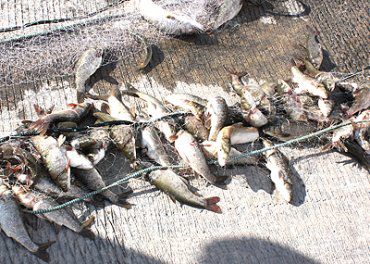At the June Public Lands Council meeting, the new aquatics manager for the Division of Wildlife Resources Justin Hart talked about area fisheries.
Hart reported that for a few years the DWR has been working to improve the fishing at Joe’s Valley Reservoir and Huntington North Reservoir. He said there are good things to report. Joe’s Valley has become a trophy splake fishery and is popular among the locals but doesn’t see much use by those from other areas. The Utah chub still infest Joe’s Valley and the trout are almost nonexistent in Joe’s Valley. The splake have been sustaining themselves and have been eating the chub. The DWR worked for several years mechanically removing the chub, but they aren’t going to do that any more and are letting the larger fish hopefully take care of the chub problem. It’s the goal of the DWR to allow people to keep quality fish. In 2008 the DWR reported to the lands council some of the challenges these fisheries face and the different things that were going to be implemented to enhance the value of these waters.
Tiger muskies have been planted into Joe’s Valley, the first stocking was of 11 inch fish. The next was smaller two inch fish. The funding for these fish came from a donation by Sportsmen for Fish and Wildlife and the Emery County Travel Bureau. It is a goal to have one fish per acre. Hart said they want to be conservative. The tiger muskie are expensive right around $2 per inch. This year in the gill net survey one tiger muskie was netted that was 34 inches and 12 pounds. The tiger muskie will eat anything and they are eating the chubs as expected because one chub 9.5 inches was found inside one of the larger tiger muskies. “We have to be careful not to overstock, we want a great fishery,” said Hart. “It’s probably unlikely a legal tiger muskie will be caught this year. Any tiger muskie under 40 inches caught must be released. They are impressive fish.
“We will continue to stock splake from five-eight inches. In the summer the splake really go deep and you don’t catch many, but we expect the tiger muskie will still be catchable during the summer months.
“Huntington North is a good bass fishery. There are blue gill and some old Utah chub in there. We stock the reservoir with browns and rainbows every year. It is a lower elevation water. We decided to try something else there and stocked it three years ago with wipers. They were fingerling. Those fish are now three years old and in the gill net survey there earlier this spring, 12-13 inch fish were netted,” said Hart.
It is the hope of the DWR that these increased fishing opportunities will help draw people here to spend money and recreate in the area. The tiger muskies will help revitalize the fishery at Joe’s Valley and will help take those chub numbers down. “If we get those chubs down we can stock with rainbow again,” said Hart.
Hart said the chubs are so successful because they are aggressive predators and they live a long time.
Council member Sherrel Ward wondered about the mercury levels in the fish caught at Joe’s Valley. Hart said the mercury is still there more so in the older larger fish because mercury builds up over time in their system. He expects mercury will be detected in the tiger muskie as they grow also. The mercury is brought in atmospherically and there isn’t anything they can do to prevent it.
Another rotenone treatment of Ferron Reservoir will take place on June 13 and after that in two weeks the reservoir will be restocked with catchable rainbows in time for the July 4 holiday. By the end of the summer Colorado cutthroat will be stocked along with sterile brook trout.
A spawn-egg collection will take place at Duck Fork on June 11.
More treatments with rotenone will take place later this year in the Ferron drainage.
Testing will still take place for the quagga mussels at Electric Lake and all boats will need to be decontaminated before and after using local waters. Scofield Reservoir still has a chub problem, too.
A bass tournament will take place on June 23 for the Relay for Life at Huntington North reservoir. Joe’s Valley has nine of the Cabelas tagged fish which can be redeemed for prizes. You must register on the Cabelas website.
A coyote predator bounty program is starting on July 1 for the DWR. Payments start on Sept. 1 and you must register with the DWR to participate it’s $50 per coyote.
Improvements made to fishing at Joe’s Valley and Huntington North Reservoirs

"Chubs are still a problem at Joe's Valley Reservoir."
